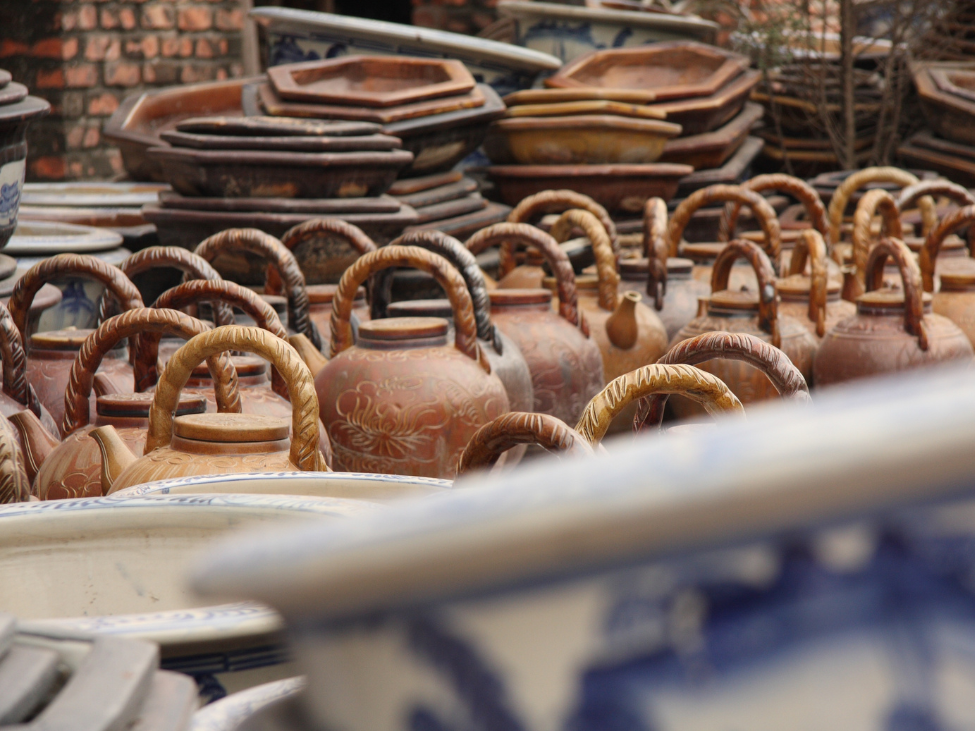What Happens When a Vespa Guide Gets Lost in Rural Vietnam: 5 Village Discoveries
- Steve Mueller

- Jul 31
- 4 min read
What Happens When a Vespa Guide Gets Lost in Rural Vietnam?
After 5 years guiding Vespa tours around Hanoi and showing thousands of travelers the usual highlights, a wrong turn near Red River Delta revealed villages that completely changed my understanding of authentic Vietnam. The GPS failure on that foggy March morning led to floating communities where families live on bamboo platforms, rising and falling with seasonal floods. This discovery sent me searching for other overlooked villages that transformed my tour routes and cultural perspective.
Mrs. Nga, an elderly woman mending fishing nets on her floating porch, invited me for tea while her granddaughter played on wooden planks swaying with water movements. "The land people think we're crazy," she laughed, "but the water provides everything we need." That encounter revealed how much of Vietnam's authentic soul exists beyond conventional tourism routes.
Why Did Bat Trang Pottery Village Teach Me About Patience?

Master Le's family has shaped clay in Bat Trang for 18 generations, with hands moving with centuries of confidence as he demonstrated Red River sediment becoming art. "Every piece carries the story of the river," he explained, pressing my clumsy fingers into clay. His workshop teaches what tour groups rushing through in 20 minutes never learn - real mastery takes decades.

The pottery wheel experience showed me how authentic cultural learning requires time and patience over quick photo opportunities. Master Le's techniques connect modern visitors with traditions spanning centuries, demonstrating why authentic travel means slowing down enough to truly absorb local wisdom.
How Do Ancient Houses in Duong Lam Demonstrate Vietnamese Resilience?

Mr. Duc's family has lived in the same laterite stone house in Duong Lam for 12 generations, with walls built from local red stone breathing with 5 centuries of history. "Each generation adds something," he explained, pointing to newer wooden elements seamlessly integrated with ancient foundations. "We don't replace the past - we build on it."
This philosophy of building upon rather than replacing the past represents Vietnamese cultural resilience I'd never fully understood. Walking streets lined with houses weathering centuries of storms revealed how communities adapt while preserving their essential character.
What Did Van Phuc Silk Village Teach Me About True Craftsmanship?
Mrs. Thuy learned silk weaving at age 7 and now demonstrates fingers dancing across looms with hypnotic precision, creating threads so fine they catch light from another dimension. "Young people want fast fashion now," she said, never pausing in her work. "But some things can't be rushed. Some beauty takes time."
This lesson about patience and quality over speed applies to authentic travel experiences - the most meaningful discoveries require time to develop. Van Phuc's dedication to traditional methods, despite modern pressures, mirrors how genuine cultural immersion needs patience over Instagram-ready moments.
How Did Dong Ho Folk Painting Village Preserve Ancient Art Forms?
Master craftsman Nguyen Dang Che, now 80+ years old, represents one of only a handful of families continuing 400-year-old Dong Ho painting traditions using pearl powder, sticky rice, and plant-based colors. His workshop demonstrates complete painting processes while explaining symbolic meanings behind zodiac animals and folklore characters. The traditional art form uses carved wooden blocks and handmade paper from Do tree bark.
Visiting Dong Ho taught me that authentic cultural preservation requires conscious resistance to mass production and commercialization. The village's commitment to handcrafted quality over quantity mirrors how genuine travel experiences prioritize depth over breadth of destinations covered.
Why Do These Village Experiences Matter for Modern Travelers?
These villages taught me that authentic Vietnam exists in moments when you're genuinely lost, phone has no signal, and you rely on strangers' kindness despite language barriers. Travel becomes meaningful when we slow down enough to truly see where we are, whether exploring by Vespa tour or wandering on foot.
The floating villages remind me that the most profound journeys happen when mist rises over Red River Delta and curiosity overcomes convenience. Sometimes heading out alone, not as a guide showing others but as a student still learning what calling Vietnam home means, provides the deepest cultural insights.
"The best memories are made when you're lost on a Vespa, following paths that don't appear on any map."
How Can These Hidden Villages Transform Your Vietnam Experience?
Authentic Vietnam discovery requires allowing yourself to be changed by places and people you encounter, rather than checking destinations off tourist lists. These hidden communities demonstrate that meaningful travel happens through genuine cultural exchange, not scheduled photo opportunities.
Village encounters taught me that travel's purpose isn't accumulating experiences but remaining open to transformation through unexpected discoveries. Whether you're a first-time visitor or longtime resident, Vietnam's rural communities offer lessons about resilience, craftsmanship, and living authentically.
Frequently Asked Questions About Hidden Villages Near Hanoi
How did you discover these hidden villages near Hanoi?
A GPS failure during a routine scouting trip led to a wrong turn 25 kilometers from Hanoi, revealing floating communities on Red River Delta. This accidental discovery prompted systematic exploration of other overlooked villages within riding distance of the capital.
Which village experience was most transformative for your guiding approach?
The floating villages of Red River Delta completely changed my understanding of Vietnamese adaptability and community living. Meeting families who've lived on bamboo platforms for generations revealed authentic cultural experiences beyond typical tourist attractions.
How long does it take to properly experience these rural villages?
Each village requires 2-4 hours for authentic cultural immersion rather than quick photo stops. Meaningful encounters with artisans and community members develop when visitors invest time in genuine cultural exchange.
What makes these villages different from typical Hanoi tourist sites?
These communities operate on authentic rhythms of daily life rather than tourist schedules, offering genuine cultural immersion. Visitors experience traditional crafts, architecture, and lifestyle practices that continue regardless of tourism.
How have these discoveries changed your Vespa tour guiding?
Village encounters shifted my guiding approach from sharing historical facts to facilitating genuine cultural connections. Tours now emphasize slowing down for meaningful interactions over covering maximum destinations efficiently.
What advice do you give travelers seeking authentic Vietnamese experiences?
Authentic experiences happen when you embrace getting lost, allow unexpected encounters to unfold naturally, and prioritize cultural understanding over photo collection. The most transformative travel moments occur when curiosity overcomes convenience and patience replaces rushing.




Comments